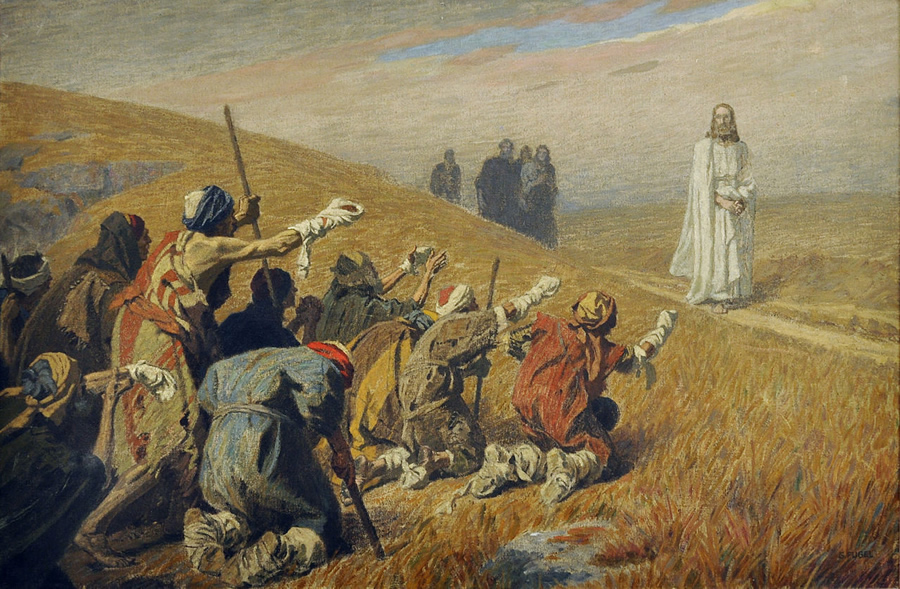
Where Are the Other Nine?
10-09-2022Weekly ReflectionFr. Manasseh Iorchir, VCThe First Reading and the Gospel passage this weekend can be placed side by side for our reflection, not only because both tell the story of the healing of lepers, but also because both focus on gratitude for God’s salvation and how it should be expressed.
In the First Reading, Naaman the Aramean Commander of the Syrian Army had approached the Prophet Elisha and requested to be healed of leprosy, an alienating disease in ancient times. The prophet directed him to plunge himself into the Jordan River seven times for a ritual bath in order to receive healing. This was the same Jordan River the Israelites crossed to enter the Promised Land, and the same Jordan River in which Jesus came to be baptized by John in the new dispensation. Although Naaman objected to this prophetic prescription, he did as he was asked after his servants convinced him to do so. The result was a miraculous transformation of his diseased skin to “the flesh of a little child.” In the Gospel passage, as He passed through Samaria and Galilee, Jesus met ten lepers who pleaded for healing. The Divine Redeemer sent them to go and show themselves to the priests who, in ancient Israel, possessed the authority to certify a hitherto blemished person clean. It is instructive that both Naaman and the ten lepers received their miracles in the process of obeying given instructions. When Naaman was asked to wash himself in the Jordan River, the exalted Commander of the Syrian Army may have felt demeaned and slighted by such a simplistic ritual. The ten lepers also may have expected Jesus to lay His hands on them commanding the leprosy to vanish and so may have been disappointed at what seemed like a referral to Jewish priests. This made the miracles more interesting - they obeyed even when the process did not satisfy their expectations. Obedience is better than sacrifice (1Samuel 15:22; Hosea 6:6). Only through obedience can we appropriate to ourselves the fruits of the salvific work of Christ.
After receiving his healing, Naaman returned with treasures to express his profound gratitude. He professed his newfound faith in the God of Israel and committed himself to His worship in exclusivity. One of the ten lepers healed by Jesus in the Gospel passage also returned to give thanks for mercies received. He had nothing in terms of material wealth to give and so he simply presented himself. He was a Samaritan, the others, kins of Jesus in the flesh, failed to return. They may have been overwhelmed with the joy of rebirth, or the desire to see family that was alienated from them on account of their Spiritual “uncleanliness,” or they may have gone off to show off their miracle. Whatever their reason for not returning, they earned for themselves an unfortunate deficit in virtue.
We are invited to obey God in all things, even when His purpose is not immediately clear to our finite minds. Every believer is a recipient of healing from the leprosy of sin first, by the washing in the waters of baptism and subsequently through “go and show yourself to the priest,” the Sacrament of Reconciliation. We, therefore, owe God an eternal debt of gratitude for His unquantifiable benevolence. There is no gift that will better express our gratitude than the gift of willful surrendering of our redeemed selves to God for His use. May we, in humility, regularly approach the Sacrament of Reconciliation to have ourselves cleansed of the leprosy of sin and may we always off er ourselves unreservedly to the service of God.
Please be kind and may God bless you.
Fr. Manasseh
BACK TO LIST